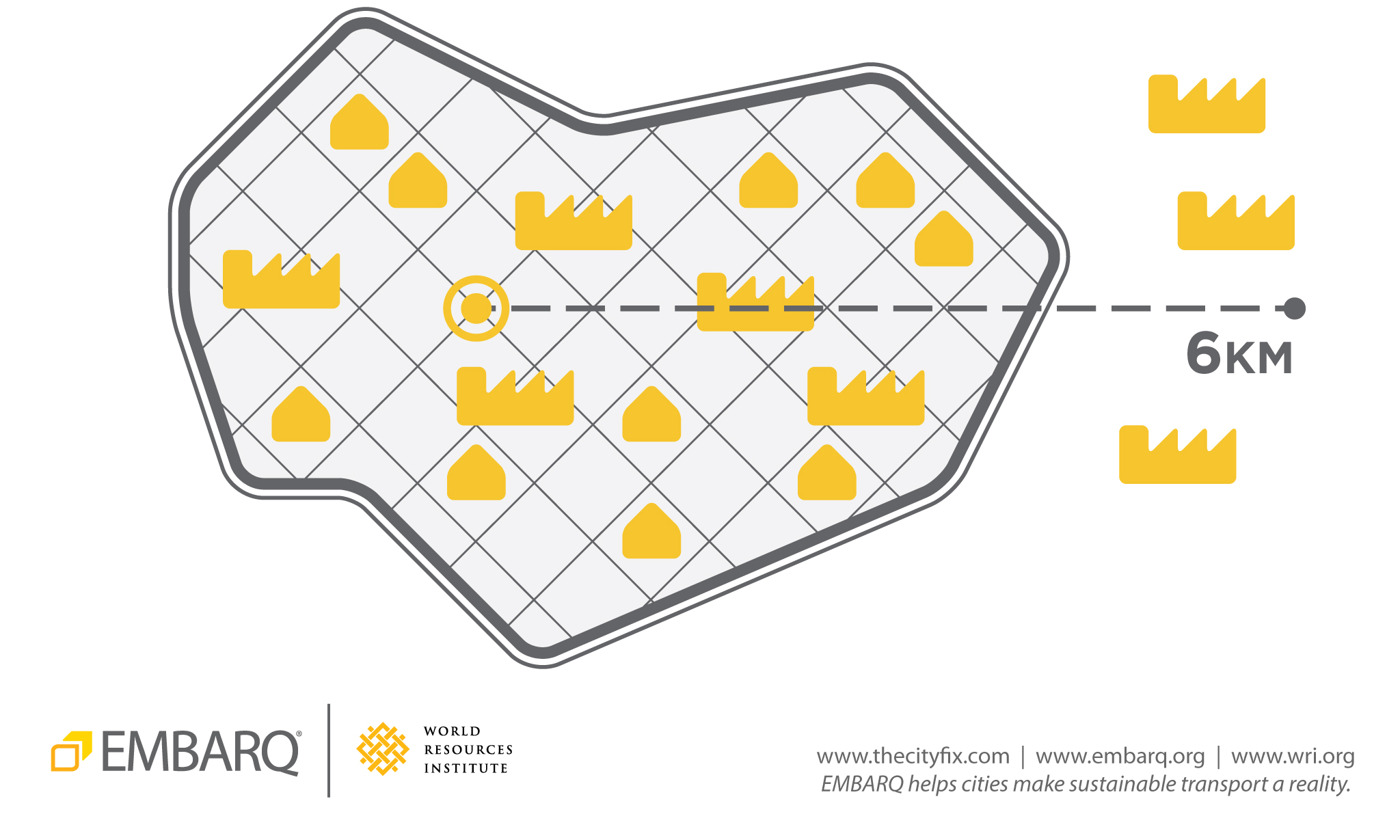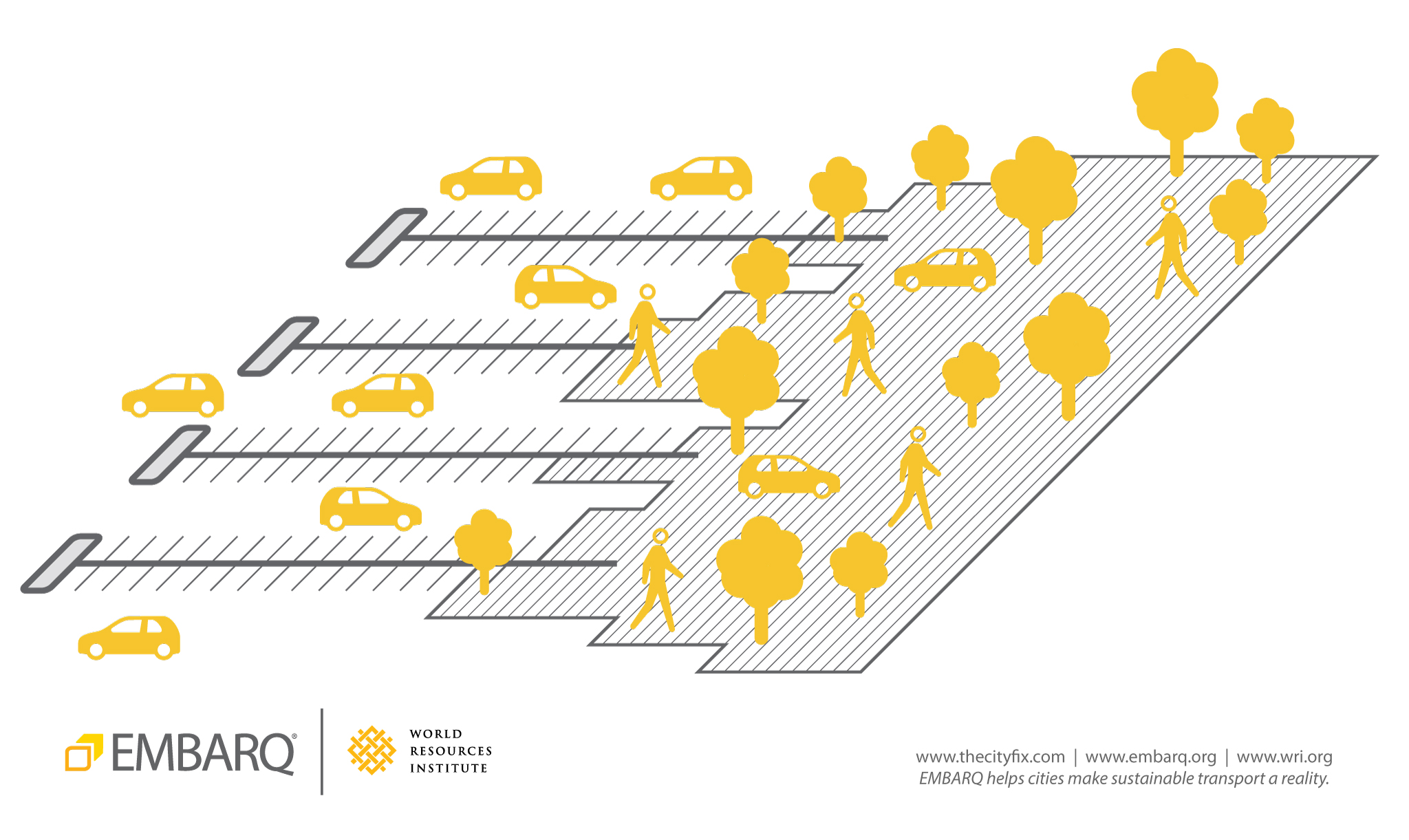People-Oriented Cities: Smarter Driving, Smarter Cities
“以人为导向的城市”系列(对Thecityfix和Insights的独特性)探索了城市如何通过以运输为导向的发展变得更加可持续和宜居(TOD)。九部分系列介绍了不同的城市设计技术和趋势,这些技术和趋势是在人们周围而不是汽车上重新定向城市。
道路上的汽车越多,城市面临的挑战就越多。近年来,像墨西哥这样的发展中国家的汽车拥有量增加,自1995年以来,每年多达23%。As these car-owners take more trips, there are更多的道路死亡,交通拥堵,更长的通勤时间和空气污染。尽管有这些风险,但大多数城市绝对以汽车为中心,几乎依靠私人车辆进行所有城市旅行,无论汽车是否是最有效或方便的选择。
Creating safer, more sustainable cities means designing them to move人们,不是汽车。实现这一目标的一种方法是运输需求管理。
What is Transport Demand Management?
Transport demand management refers to a set of strategies that maximize urban mobility by limiting the unnecessary use of private cars. These strategies recognize that cars will always play a role in the make-up of a city, and work to manage car use by promoting more sustainable and integrated transport options. Furthermore, they make streets safer forallcommuters—drivers, cyclists, and pedestrians.
为了到达城市的任何地方,旅行者决定使用哪种运输方式,采取哪种路线以及最方便的方法。运输需求管理专注于城市运输系统中的每一个联系,削减了汽车依赖性并使可持续运输更具吸引力。
Build Up Sustainable Mobility Options
Car-oriented cities are sprawling and dispersed, leaving a disproportionate amount of space for cars at the expense of other modes of transport. Even with carpool lanes and car-sharing schemes, which use road space more efficiently, private cars still gridlock city streets. For example, it takes up to50次more road space for cars to carry the same number of people as the average public transport vehicle in Mexico City, based on the city’s average occupancy of每辆车1.21名乘客。
但是如果没有可行的替代方案,通勤者除了汽车之外几乎没有选择。可用性public transportthat connects people’s homes to schools or employment centers can make for a更好,更短的通勤and reduce traffic congestion, as everyday commutes make up nearly30%of total vehicle traffic in North American cities.

Integrate Car Travel with Other Forms of Transport
Cars can be an efficient piece of urban transportation systems, but only if integrated with more sustainable modes like bus rapid transit (BRT), metro, and主动运输。Commuters can easily drive to a designated parking lot and take public transport or walk to their destinations. Thesepark-and-rideor公园和步行事实证明,计划在体育赛事之前取得了成功10 percent参与者停在主要体育场外。
Design Safer Streets
街道设计也是关键因素。面向汽车的城市旨在高速移动车辆。尽管这使机动移动性方便,但它也增加了交通事故崩溃的风险,抑制了其他运输方式,并危及行人和骑自行车的人。
更好的街道设计可以最大程度地减少道路安全风险和慢速汽车,而不会阻碍其流动。城市速度限制工作:纽约市的城市内速度限制为25 mph(40 km/h)为更省油并防止80% of collisions from being fatal。Traffic calming measures还可以通过降低速度来帮助创建更安全的街道:
- Narrowing vehicular lanes, covering surfaces with rough paving, and adding speed bumps
- Prioritizingpedestrian crossingsby extending sidewalks or raising roadway surfaces at intersections
- 提供清晰的traffic signalsfor all road users
Regulate Parking
Making parking inexpensive and easy spurs the demand for cars. Free parkingsubsidizes drivingand encourages car-centric development, fueling urban traffic congestion and road safety risks. Cities can reduce car-dependence by:
- 控制supply of parking spaces根据土地使用和可用的运输替代方案,而不是预计停车需求增加
- 收费停车为了更有效地使用空间
- Prioritizing space for sustainable transport alternatives例如汽车共享站,自行车停车和公共汽车站

以人为导向的城市将汽车视为更大的可持续移动策略的一部分,因此必须提供充分管理汽车使用的解决方案。运输需求管理可以改善城市居民的生活质量,但前提是地方政府,城市规划师和其他利益相关者将这些策略与互补的城市流动策略一起运用。最后,最聪明的城市不是消除汽车的城市,而是可以将它们整合到可持续的城市出行选择网络的城市。
学到更多:请继续关注“以人为导向的城市”系列中的下一个条目,该连续剧将解决车辆的管理管理。有关可持续城市和面向运输的开发范式的更多信息,请下载Ambarq的城市社区面向运输的发展指南。